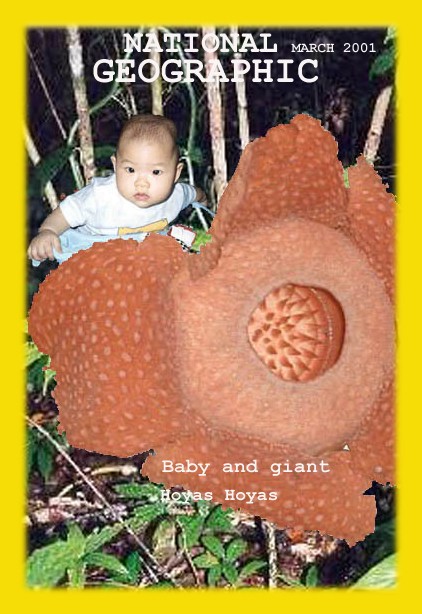Flora abstracts
. Selected botany related passages from literature .
![]()
|
David Attenborough's encounter with Amorphophallus Titanum in Sumatra eafweafweafweafweafweafweafweafweafweafweafweafweaf "Finding a flower with such a such a *brief life is clearly not easy .... a never-to-be-forgotten thrill....It was so out of scale with every other plant around it that it seemed to belong to another world, to have landed perhaps from outer space. For some indefinable reason I felt that it would not be surprising to see it make some convulsive movement." "Such a gigantic inflorescence seems unnecessarily large to attract pollinators as small as sweat bees or even carrion beetles. However, its size is more likely connected with the pungency and distribution of its odour than the size of its pollinators. EA To produce its perfume, the plant raises its internal temperature secreted in its heart. The perfume then emerges from a slit in the side of the spadix. It would be more accurate, therefore, to compare the spadix with a factory chimney rather than a church spire, and plainly the taller it is, the more widely it will disperse its scent. And it is indeed spectacularly successful in doing so, for the villagers who had guided us to the flower told us that even they had discovered it by sniffing in the air from fifty yards away." EAFWeafweafweafweafweafweafwea |
|
|
* the flower lasts two days before collapsing. From "The private life of plants". Photo from BBC website on a Huntington event 2000. |
|
|
|
|

From David Attenborough, "The private life of plants". Photo from EAFW Fantasy Creations
|
Rafflesia:
The extravagant parasite
"Why should the flower be so extraordinarily big and out of proportion to the rest of the body , the threads hidden within the tissue of the vine ? Its wide spreading petals cannot assist in the dispersal of its scent, as the tail spadix of the titan arum almost certainly does.... Plants, like any other living things, are ruled by cost-efficiency budgets. The food and energy they expend in growing flowers, leaves or any other organs must normally bring a commensurate advantage of some kind. But Rafflesia may not be so curbed. It does not, after all, earn the food it expends. *It takes it straight from the vine. Provided that the vine is not weakened by the loss to the point of death, there seems to be no limit to the amount the Rafflesia may extract and therefore no limit to the size of the flower it constructs. Maybe an unearned income in the plant world, as elsewhere, can lead to profligacy and extravagance on a truly monumental scale." fweafweafweafweafweafweafweafweafweafwea *Rafflesia is a parasite on Tetrastigma vine. |
| A
Martyr for Asian botany
"(C.B.) Robinson* was collecting plants which were described by Rumphius in Ambon for a taxononomic revision. At the same time he was collecting in a certain locale several misfortunes befell the local inhabitants and they attributed their bad luck to a red (or red headed) demon in the forest. When Robinson (who was red headed) walked out of the forest, the natives became alarmed and suspicious. Robinson who must have been hungry or thirsty asked for a coconut to be cut for him....instead of asking for a kelapa (coconut) to be cut, he said "kepala" (head). The natives did just that and C.B. Robinson joined the ranks of many martyrs who gave their life for science." *Charles Budd Robinson, Canadian botanist, murdered on 5 Dec 1913. From Joseph Arditti, Malayan Orchid Review V23/89 |
 |